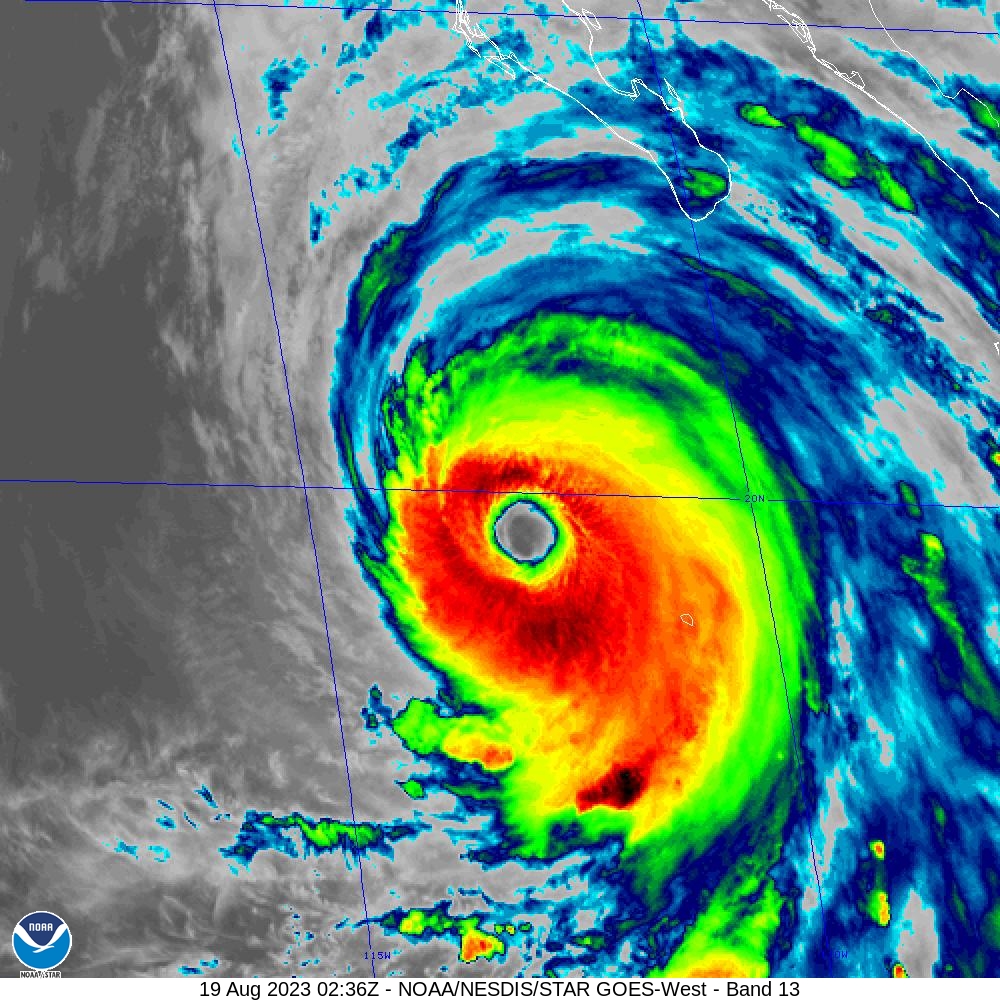
https://www.star.nesdis.noaa.gov/goes/floater.php?stormid=EP092023#homePageLink
Hurricane Hillary is a monster hurricane as a Category 4 hurricane with 130 mph winds as of 10:00 PM CST. It is quite large for a East Pacific Hurricane as it it has tropical storm force winds extending up to 255 miles! Most East Pacific hurricanes are small as the basin is smaller than Atlantic or West Pacific. The East Pacific produces many hurricanes due to warm water, less dry air, and North American Monsoon. Monsoon spin up thunderstorm clouds. In fact, it is the second most active basin in the world. Only the West Pacific is most active. Typhoon is for West Pacific, which is west of the International Date Line.
Here is the most recent forecast model for where Hillary will go. The forecast model is from National Center for Atmospheric Research (NCAR). It is a heat map generated by QGIS. The heat map use points within 300 mile/480 kilometers radius. I used the latest forecast, which is at 0000Z.
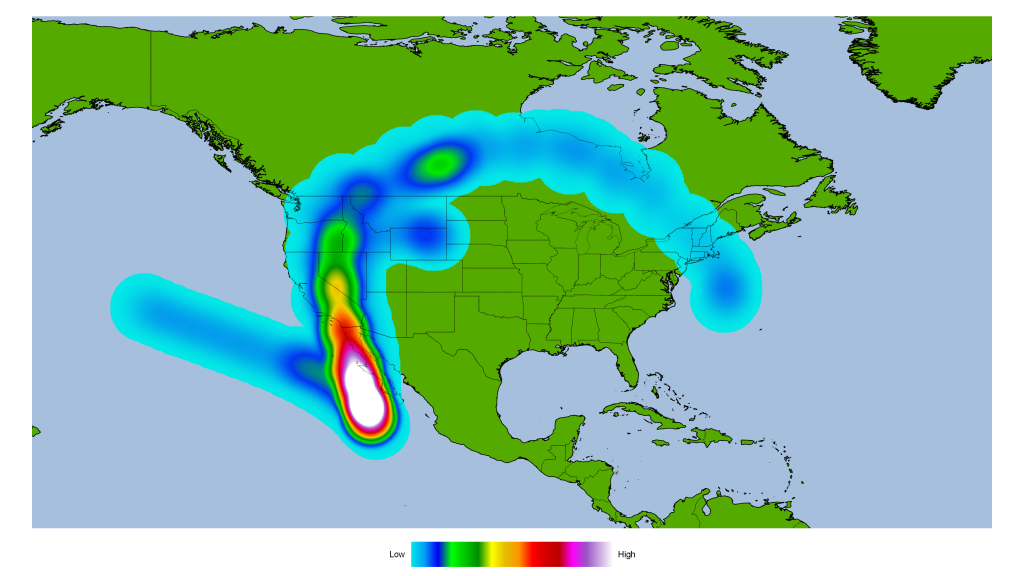
Most of the forecast models have Hillary heading northwards towards Baja California. From there, it could remain over Baja California or stay over the ocean and head towards Southern California. How intense will Hillary be by the time it comes close to Southern California? Here is an intensity forecast model from NCAR.
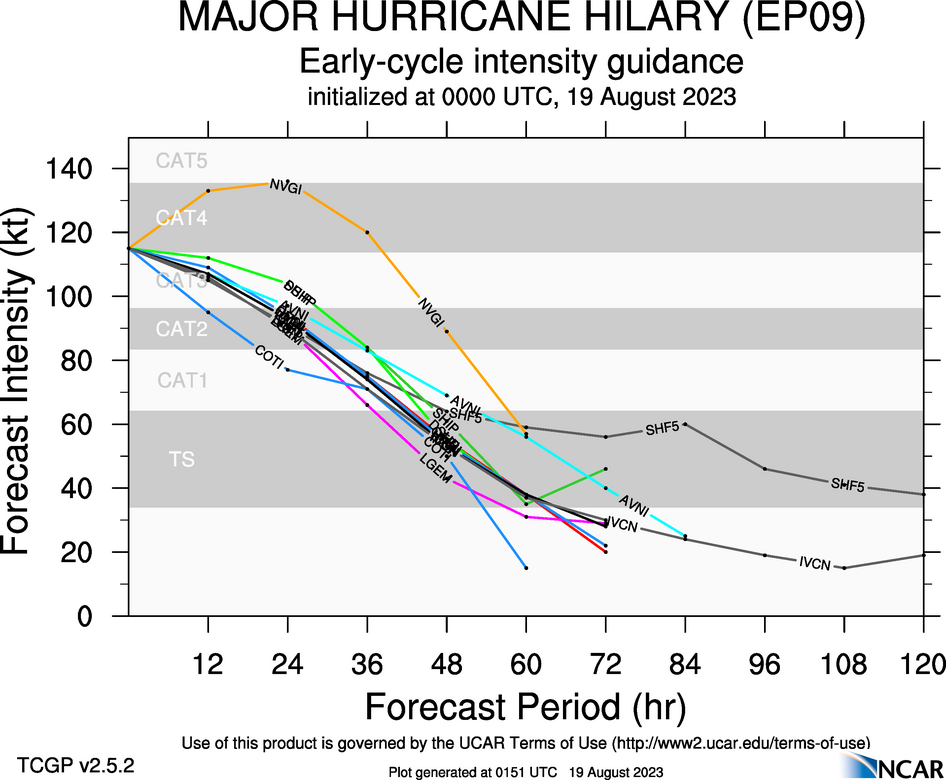
Most forecast models have Hillary weakening in 24 hours. The NVGI has it intensifying further. I would not be surprised if Hillary does intensify further. I think Hillary is most likely to weaken further. Most forecast models have Hillary as a tropical storm before it hits Southern California.
Tropical cyclones have hit Southern California in the past. It last happened in 1939, when it made landfall around Long Beach. It has been dubbed “El Cordonazo” or “The Lash of St Francis”, which is named by Mexican fishermen. The once hurricane dumped heavy rain over large area of Southern California. Some areas saw nearly a foot of rain. The storm claimed nearly 100 lives. San Diego was hit by a hurricane in 1858. The only recorded hurricane to hit California. It is very likely California has been hit by hurricanes prior to 1858. It reportedly dump heavy rain over a large area of Southern California. Both occurred during El Nino. East Pacific is more active during El Nino.
Tropical cyclones rarely hit California because the water is cooler, compared to the East Coast or Gulf Coast. Tropical cyclone remnants have impacted California and the American Southwest. They often provide beneficial rains.
Here are rainfall forecast totals between August 18, 2023 to August 28, 2023. They are from Weather.US. The forecast models are:
GFS (American)
EURO (European)
GDAPS/UM (South Korea)
JMA (Japanese)
GEM (Canadian)
CMA (China)
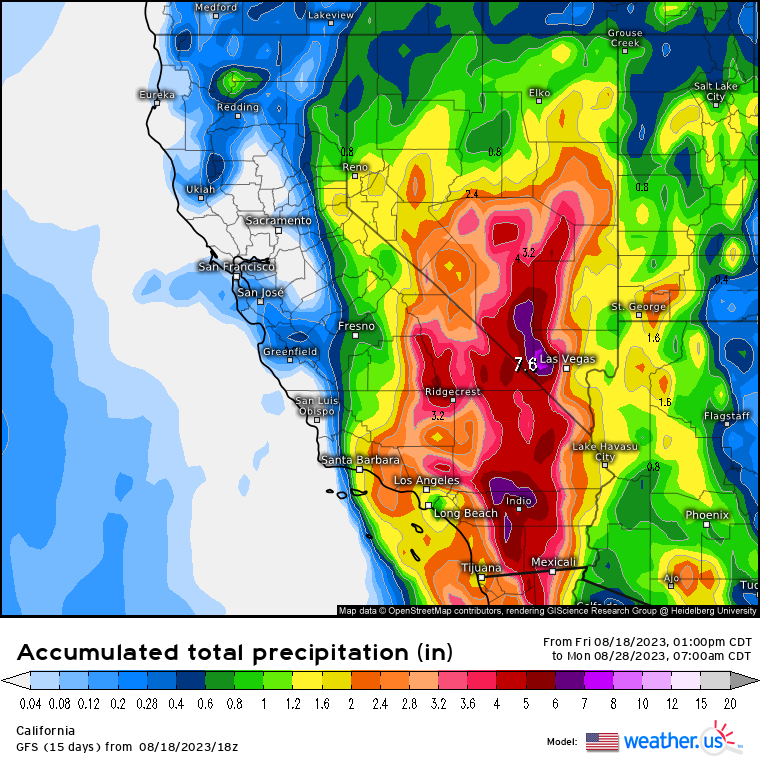
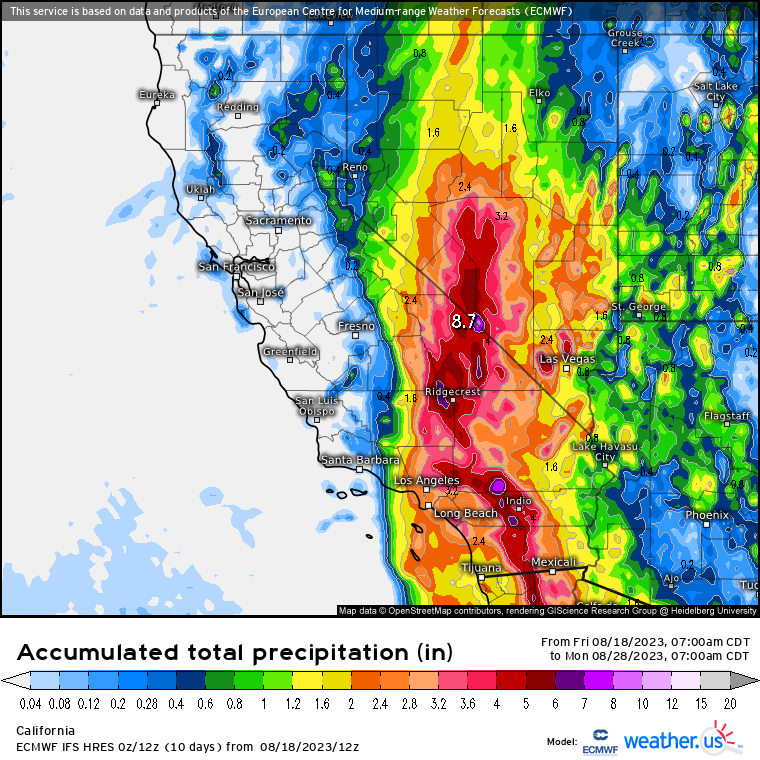
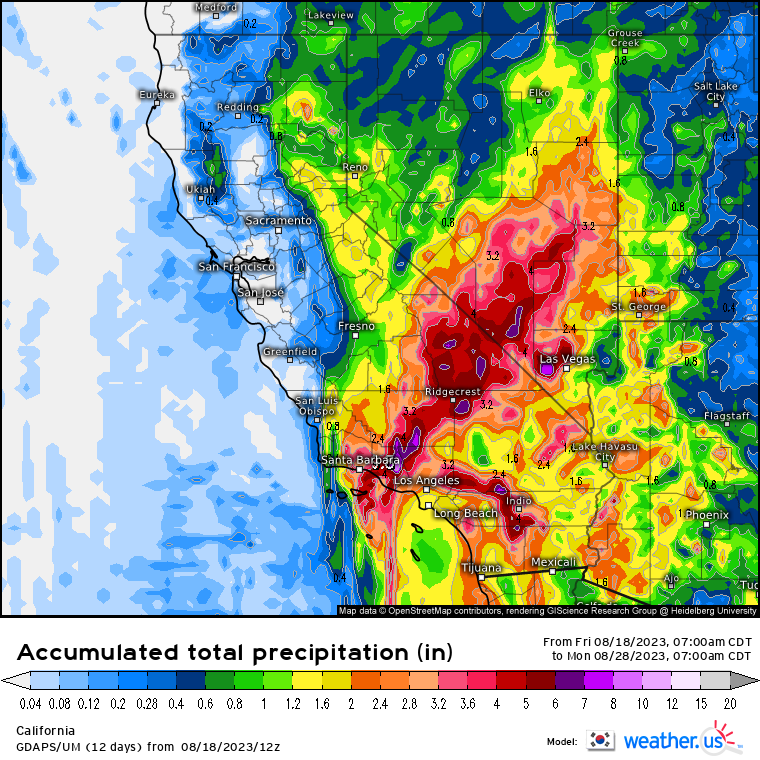
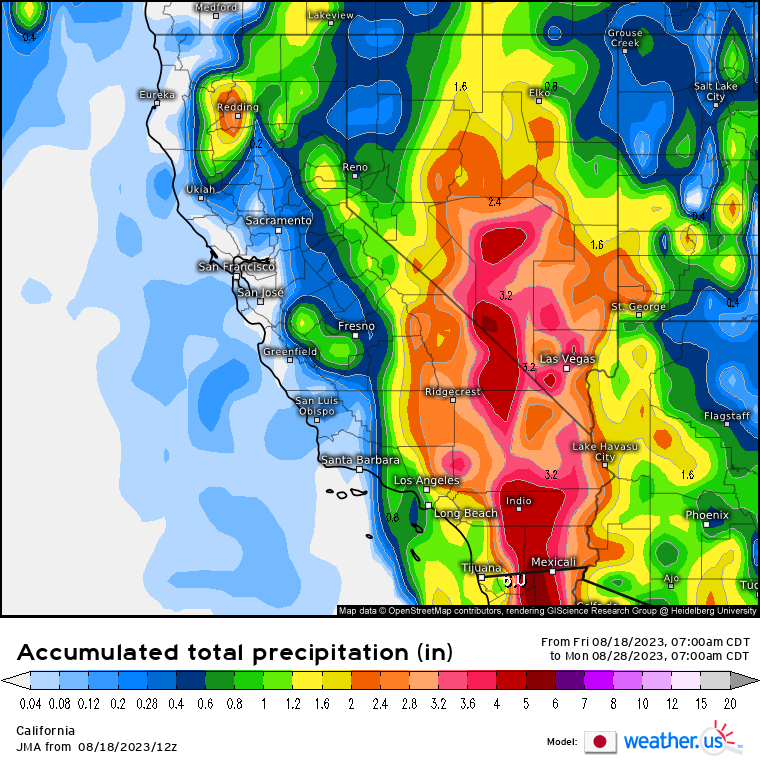
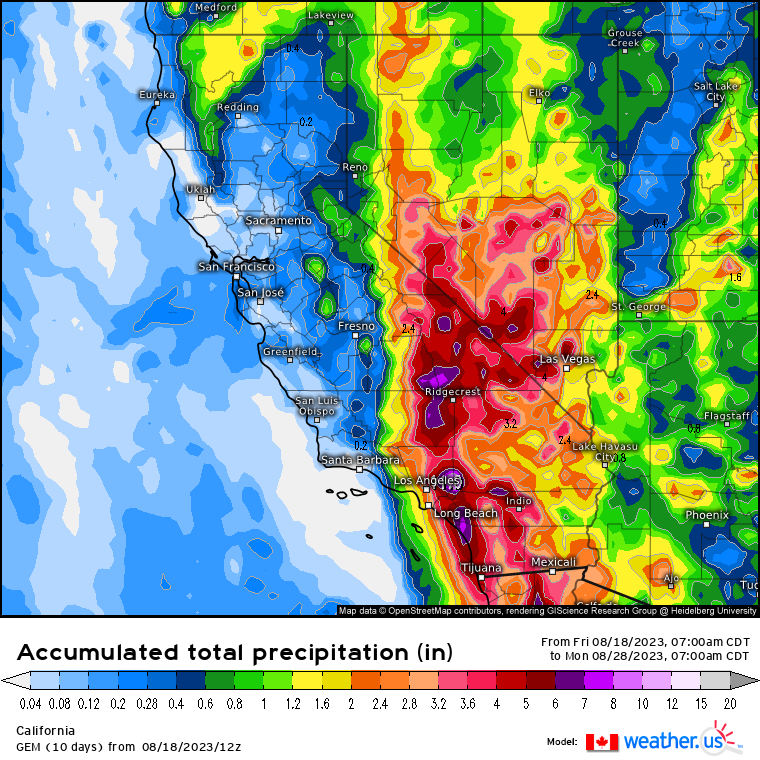
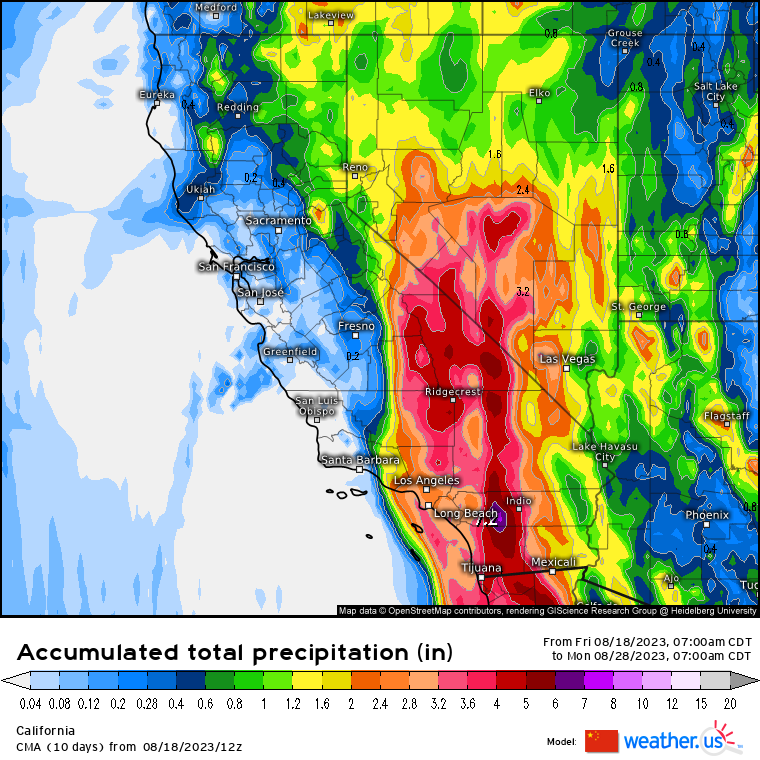
The Canadian has the highest amount of 11.00 inches of rain. The Japanese has the lowest amount of 6.00 inches. I ran a statistical analysis using PSPP. I look at rainfall total forecast.
| Mean | 8.38 |
| Median | 8.15 |
| Standard Deviation | 1.82 |
| 95% Confidence Interval Lower Bound | 6.47 |
| 95% Confidence Interval Upper Bound | 10.30 |
The mean rainfall total is 8.38 inches with median of 8.15 inches. The 95% Confidence Interval range are from 6.47 inches to 10.30 inches. It is probable the rainfall total will be somewhere between 7 to 11 inches of rain. There is a five percent chance that it is not in the true mean. It means it could be below 7 inches or over 11 inches. I can say with 95% confidence that the rainfall total is probably going to be somewhere between 7 to 11 inches of rain. More than likely, it is over 7 inches of rain.
I would not be surprised if some areas see over a foot rain. It would mostly likely be in the mountainous areas of California and Arizona. Mountainous areas on windward side are very wet. In fact, some of the wettest areas in the world are in mountainous areas.
Here is what I think will happen.
-Hillary is likely to weaken overnight.
-Hillary could make landfall on Baja California.
-Hillary is likely to make landfall as a tropical storm on Southern California.





































